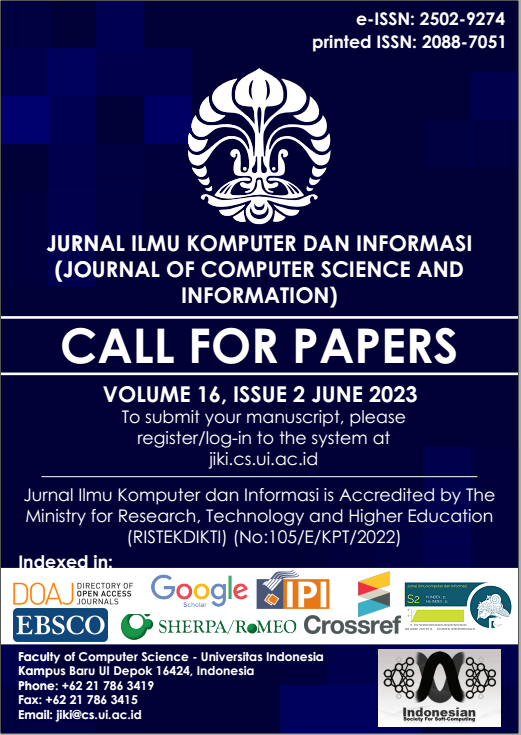Myers-Briggs Type Indicator Personality Model Classification in English Text using Convolutional Neural Network Method
Keywords:
classification, natural language processing, MBTI personality model, GloVe word embedding, convolutional neural network
Abstract
Myers-Briggs Type Indicator (MBTI) is a personality model developed by Katharine Cooks Briggs and Isabel Briggs Myers in 1940. It displays a combination of preferences from four domains. Generally, test takers need to answer about 50 to 70 questions, and it is relatively expensive to know MBTI personality. The researcher developed a personality classification system using the Convolutional Neural Network (CNN) method and GloVe (Global Vectors for Word Representation) word embedding to solve this problem. The dataset used in this research consists of 8,675 data from the Kaggle site. The steps in this research are downloading the dataset from Kaggle, text preprocessing, GloVe weighting, classification using the CNN method, and evaluation using accuracy from the Confusion Matrix. Based on the tests carried out, using GloVe weighting can improve the model accuracy rather than random weighting. The best GloVe word dimensions depend on the metrics used to measure the model performance and the data of the classes contained in the dataset. From the CNN hyperparameter tuning test, the Adamax optimizer performs better and produces higher accuracy than the Adam optimizer. In addition, the CNN hyperparameter tuning increased model accuracy more significantly compared with the best GloVe word embedding dimensions.
Published
2022-07-02
How to Cite
Sugihdharma, J. A., & Bachtiar, F. A. (2022). Myers-Briggs Type Indicator Personality Model Classification in English Text using Convolutional Neural Network Method. Jurnal Ilmu Komputer Dan Informasi, 15(2), 93-103. https://doi.org/10.21609/jiki.v15i2.1052
Section
Articles
Authors who publish with this journal agree to the following terms:
- Authors retain copyright and grant the journal right of first publication with the work simultaneously licensed under a Creative Commons Attribution License that allows others to share the work with an acknowledgement of the work's authorship and initial publication in this journal.
- Authors are able to enter into separate, additional contractual arrangements for the non-exclusive distribution of the journal's published version of the work (e.g., post it to an institutional repository or publish it in a book), with an acknowledgement of its initial publication in this journal.
- Authors are permitted and encouraged to post their work online (e.g., in institutional repositories or on their website) prior to and during the submission process, as it can lead to productive exchanges, as well as earlier and greater citation of published work (See The Effect of Open Access).













